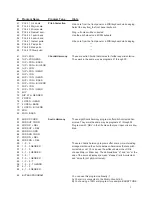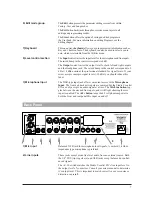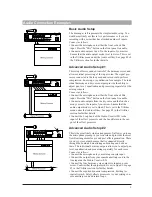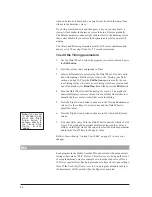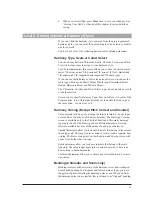
13
The style naming conventions are are described in the “Understanding the
Five Harmony Types” section.
The Harmony Controls
For musically correct harmonies to be generated automatically, you must
provide the Studio Vocalist EX with some musical information. It’s just like
when you are playing with other musicians; they need to know what chords
you’re playing in order to stay “in key” with you. You can use either a MIDI
keyboard or the one-octave keyboard and eight softkeys to provide this
information.
When you load a Program based on Chordal or Scalic harmony, the eight
softkeys
may be used to call up a different harmony variations. Each Softkey
corresponds to a harmony style on the LCD display (see example below).
Several different harmony styles are assigned to each program so that you
don’t have to load a completely different program when, for example, you
want to change from a major to a minor harmony.
Different Programs require different control input from you. For example,
you can use the front panel keyboard (or MIDI keyboard notes) to choose the
root note
of the chord in a Chordal Program, the
Key
in a Scalic Program, or
the actual harmony notes to be played in a Vocoder Program.
Understanding the Five Harmony Types
Each program is based on one of five basic harmony types. The differences
lie in the control method you choose and the sound you are after.
The Studio Vocalist EX’s five basic harmony types are:
• Chordal
These three Harmony types need musical
control from you as you are singing.
• Scalic
• Vocoder
Note:
The first har-
mony style (top left
softkey) is always
loaded when a new
program is loaded.
Содержание STUDIO VOCALIST EX
Страница 1: ...EX Version 1 10 ...
Страница 6: ...4 ...





